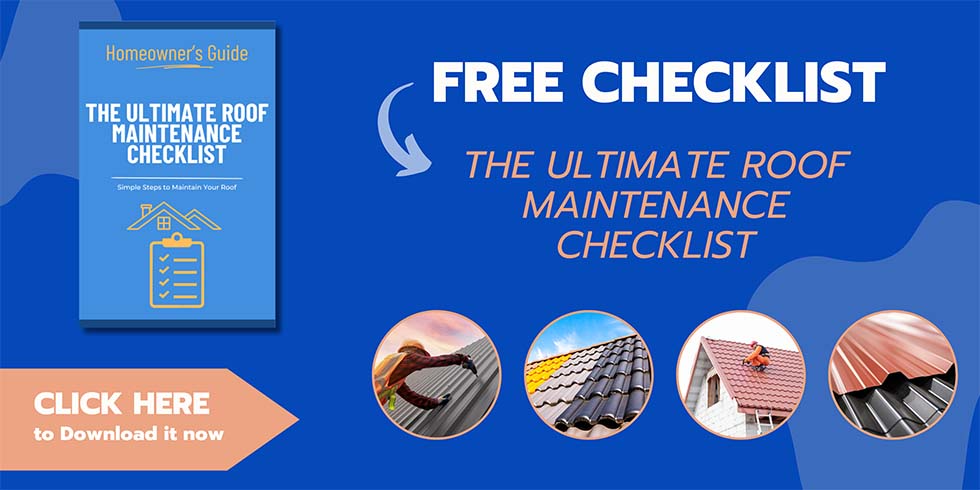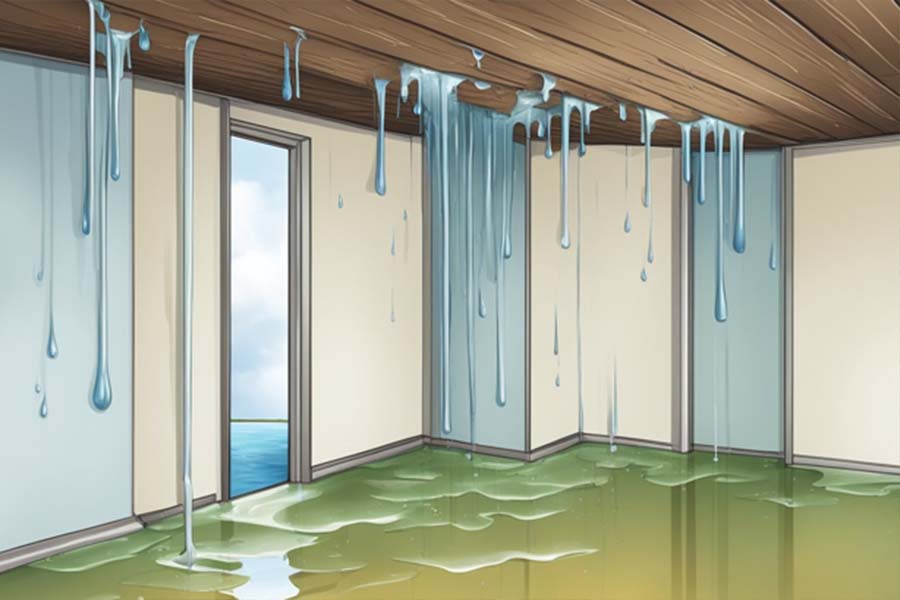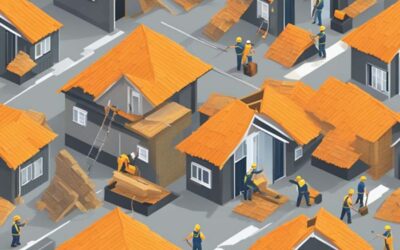Small roof leaks may seem like a minor inconvenience, but ignoring them can lead to significant problems down the road. Water damage, mold growth, and structural issues are just a few of the hidden dangers that can arise from untreated leaks. Homeowners who neglect to address these issues may find themselves facing costly repairs and even health hazards.
Water damage is perhaps the most obvious consequence of ignoring small roof leaks. Over time, water can seep into walls, ceilings, and floors, causing structural damage and weakening the overall integrity of a home. Additionally, water damage can lead to the growth of mold and mildew, which can cause health problems such as respiratory issues and allergies.
Ignoring small roof leaks can also result in more significant structural issues. As water continues to penetrate a home’s infrastructure, it can damage the foundation and other load-bearing elements. This can lead to costly repairs and even render a home uninhabitable. In the worst cases, structural damage can pose a significant safety risk to homeowners and their families.
Understanding Roof Leaks
Causes of Roof Leaks
Roof leaks can be caused by a variety of factors, including poor installation, aging materials, and severe weather conditions. In some cases, leaks can also be caused by damage to the roof, such as from falling branches or debris.
One common cause of roof leaks is the buildup of debris on the roof, such as leaves, twigs, and dirt. This debris can trap moisture on the roof, leading to the growth of mold and mildew, which can weaken the roof and cause leaks over time.
Another common cause of roof leaks is the use of low-quality roofing materials, such as shingles or tiles. These materials are more prone to damage and wear over time, which can lead to leaks and other issues.
Identifying Small Leaks
Small roof leaks can be difficult to detect, but it’s important to catch them early before they become larger and more costly to repair. Signs of a small roof leak can include water stains on the ceiling or walls, damp or musty odors, and the presence of mold or mildew.
To identify a small leak, it’s important to inspect the roof regularly for signs of damage or wear. This can include checking for missing or damaged shingles, cracks in the roof, or areas where water may be pooling.
It’s also important to address any small leaks as soon as possible, as they can quickly become larger and more difficult to repair over time. This can help to prevent more extensive damage to the roof and the interior of the home.
Immediate Risks of Small Leaks
Water Damage
Even small roof leaks can cause significant water damage to a building. Water can seep through tiny cracks and crevices, and over time, it can cause serious damage to the structure of the building. Water can also damage insulation, electrical systems, and other important components of the building.
If left unaddressed, water damage can lead to costly repairs and even structural damage. It is important to address small leaks as soon as possible to prevent water damage from occurring.
Mold and Mildew Growth
Small roof leaks can also lead to the growth of mold and mildew. Mold and mildew thrive in damp environments, and even a small amount of moisture can create the perfect conditions for them to grow.
Mold and mildew can cause a variety of health problems, including respiratory issues, allergies, and even infections. They can also cause damage to the building’s structure and can be difficult and expensive to remove.
It is important to address small leaks as soon as possible to prevent mold and mildew growth from occurring. Regular inspections and maintenance can help identify and address small leaks before they become a bigger problem.
Long-Term Consequences
Structural Damage
Ignoring small roof leaks can lead to significant structural damage to a building over time. Water that seeps into the roof can cause wooden beams and trusses to rot, which can weaken the roof’s overall structure. This can lead to sagging roofs, which can eventually collapse if not addressed.
Additionally, water can seep into the walls and ceilings, causing them to become soft and weak. This can lead to cracking and crumbling of the building’s foundation, which can be costly to repair.
Insulation Deterioration
Small roof leaks can also lead to insulation deterioration. Water that seeps into the roof can damage the insulation, causing it to become ineffective. This can lead to higher energy bills as the building’s heating and cooling systems have to work harder to maintain a comfortable temperature.
Additionally, damaged insulation can lead to the growth of mold and mildew, which can be harmful to the building’s occupants. Mold can cause respiratory problems, allergies, and other health issues, which can be costly to treat.
Electrical Hazards
Small roof leaks can also lead to electrical hazards. Water that seeps into the roof can come into contact with electrical wiring and fixtures, causing them to short-circuit or malfunction. This can be dangerous and potentially lead to fires or electrocution.
Additionally, water can damage electrical equipment such as air conditioning units, computers, and other electronics, which can be costly to replace.
In summary, ignoring small roof leaks can lead to significant long-term consequences such as structural damage, insulation deterioration, and electrical hazards. It is important to address any roof leaks as soon as they are detected to prevent costly repairs and potential safety hazards.
Financial Implications
Repair Costs
Ignoring small roof leaks can lead to bigger problems that require costly repairs. The longer the leak goes unaddressed, the more damage it can cause to the roof, walls, ceilings, and other parts of the house. In some cases, the damage can be so extensive that the entire roof needs to be replaced, which can cost thousands of dollars. It is important to fix small leaks as soon as they are detected to avoid larger and more expensive problems down the road.
Increased Energy Bills
Small roof leaks can also cause an increase in energy bills. Leaks can allow cold air to enter the house during the winter and hot air during the summer, making it harder for the HVAC system to maintain a comfortable temperature. This can lead to higher energy bills as the system works harder to compensate for the loss of air. Fixing small leaks can help to reduce energy bills and make the home more energy-efficient.
Property Value Decline
Ignoring small roof leaks can also lead to a decline in property value. If the damage is extensive, it can be a red flag for potential buyers. Buyers may be hesitant to purchase a home that has a damaged roof, and if they do, they may offer a lower price. It is important to fix small leaks to maintain the value of the property and to avoid any potential issues when it comes time to sell the home.
In conclusion, ignoring small roof leaks can have serious financial implications. It is important to address any leaks as soon as they are detected to avoid costly repairs, increased energy bills, and a decline in property value.
Health and Safety Concerns
Respiratory Issues
Ignoring small roof leaks can lead to the growth of mold and mildew, which can pose significant health risks to individuals who are exposed to them. Mold spores can cause respiratory issues, such as coughing, wheezing, and difficulty breathing. In some cases, prolonged exposure to mold can lead to more severe health problems, such as asthma and other respiratory conditions.
It is essential to address small roof leaks promptly to prevent the growth of mold and mildew. Homeowners should inspect their roofs regularly and address any leaks immediately to avoid potential health risks.
Slip and Fall Accidents
Small roof leaks can also create slippery surfaces, increasing the risk of slip and fall accidents. Water can seep through the roof and create puddles or damp patches on the floor, making it challenging to walk on the surface. Slip and fall accidents can lead to severe injuries, such as broken bones, head injuries, and even paralysis.
Homeowners should take necessary precautions to prevent slip and fall accidents. They should install safety measures, such as handrails, non-slip mats, and warning signs, to alert individuals about the potential hazards. Additionally, homeowners should address small roof leaks immediately to prevent the accumulation of water and reduce the risk of slip and fall accidents.
Ignoring small roof leaks can lead to significant health and safety concerns. Homeowners should take necessary precautions to prevent the growth of mold and mildew and reduce the risk of slip and fall accidents. Regular roof inspections and prompt repairs can help ensure the safety and well-being of individuals in the home.
Preventive Measures
Regular Inspections
To prevent small roof leaks from becoming major issues, it is essential to conduct regular inspections of the roof. Homeowners should aim to inspect their roofs at least twice a year, preferably in the fall and spring. During these inspections, look for signs of wear and tear, such as missing or damaged shingles, cracks in the roof, or signs of water damage.
Timely Repairs
If any issues are identified during the inspection, it is crucial to address them promptly. Delaying repairs can lead to more significant problems down the line, and the cost of repairs will only increase over time. Homeowners should be proactive and fix any small leaks or damages as soon as they are detected.
Professional Maintenance
While regular inspections and timely repairs are essential, it is also essential to seek professional maintenance occasionally. Professional roofers can identify issues that may not be visible to the untrained eye and provide a more thorough inspection. They can also provide routine maintenance, such as cleaning gutters and downspouts, to prevent clogs that can lead to water damage.
By following these preventive measures, homeowners can help ensure their roofs remain in good condition and prevent small roof leaks from becoming significant problems.





0 Comments